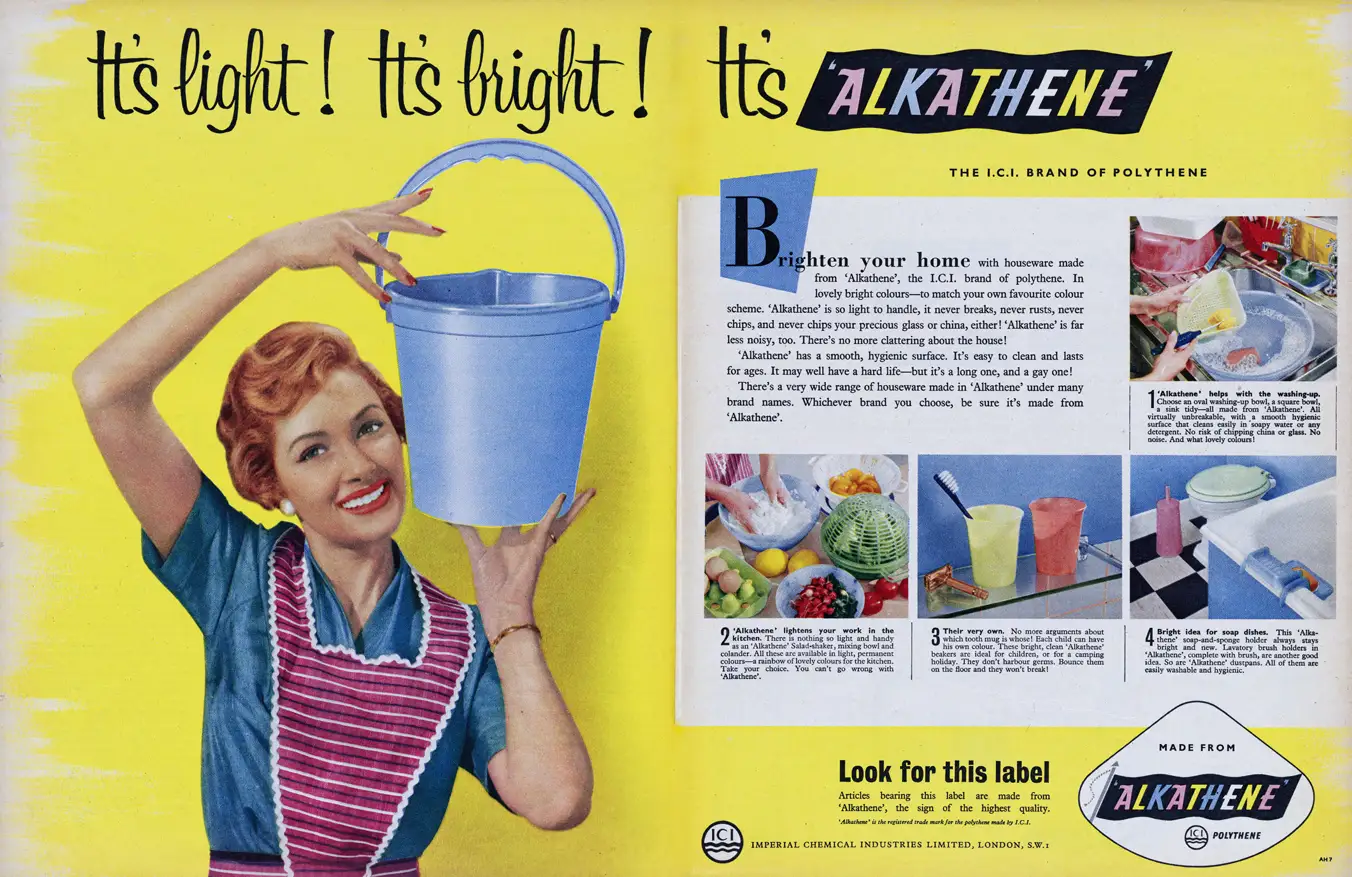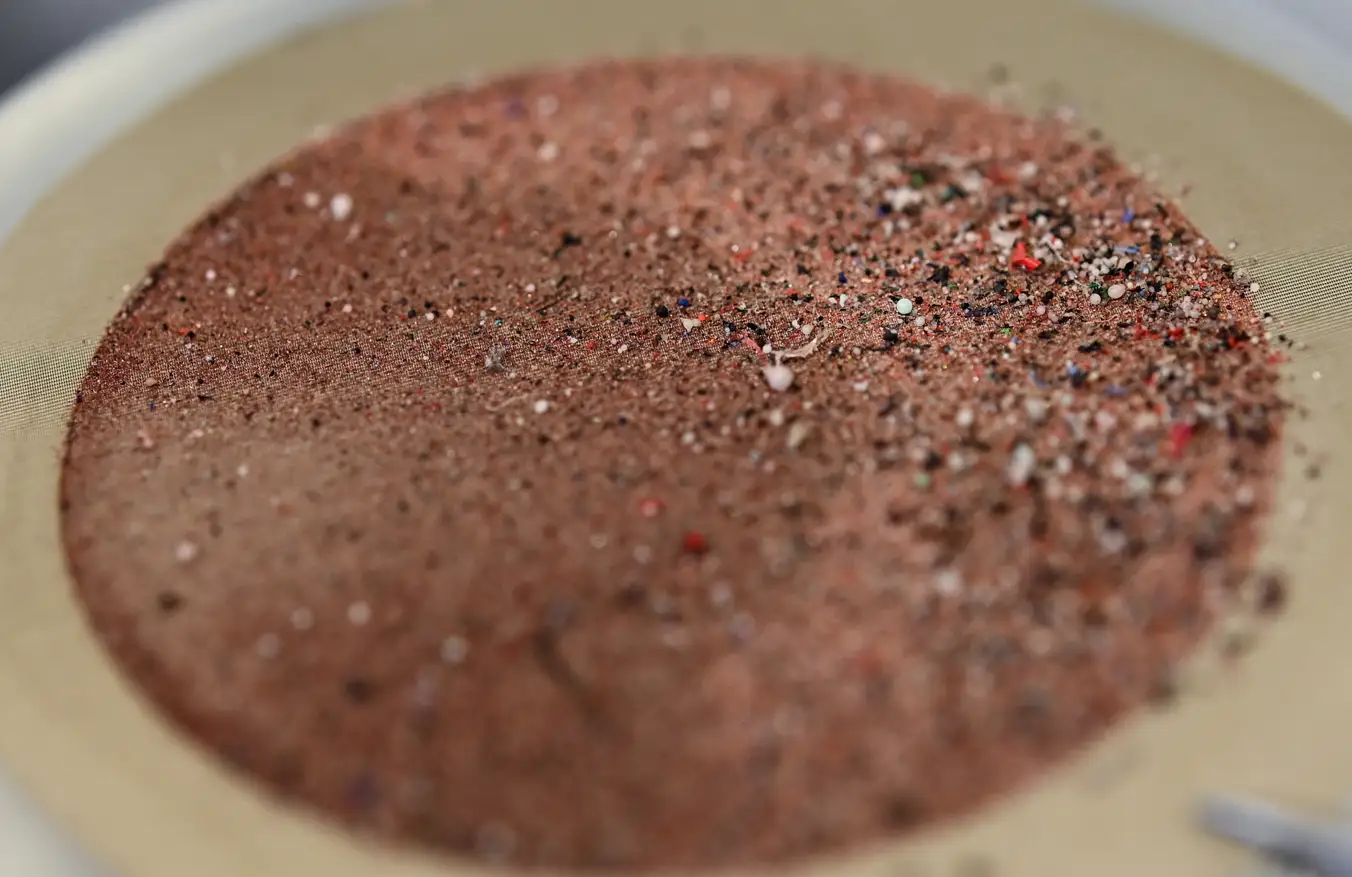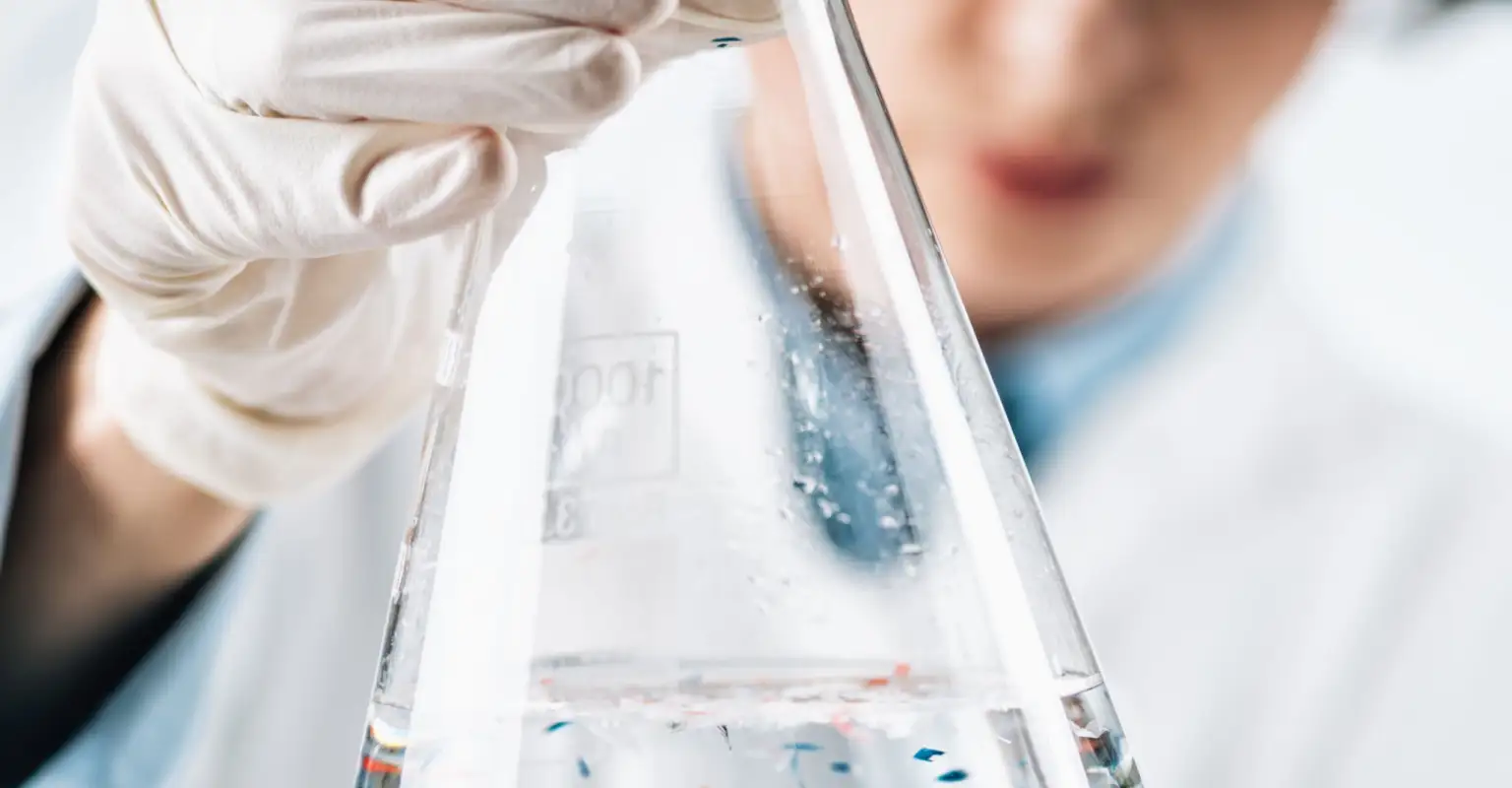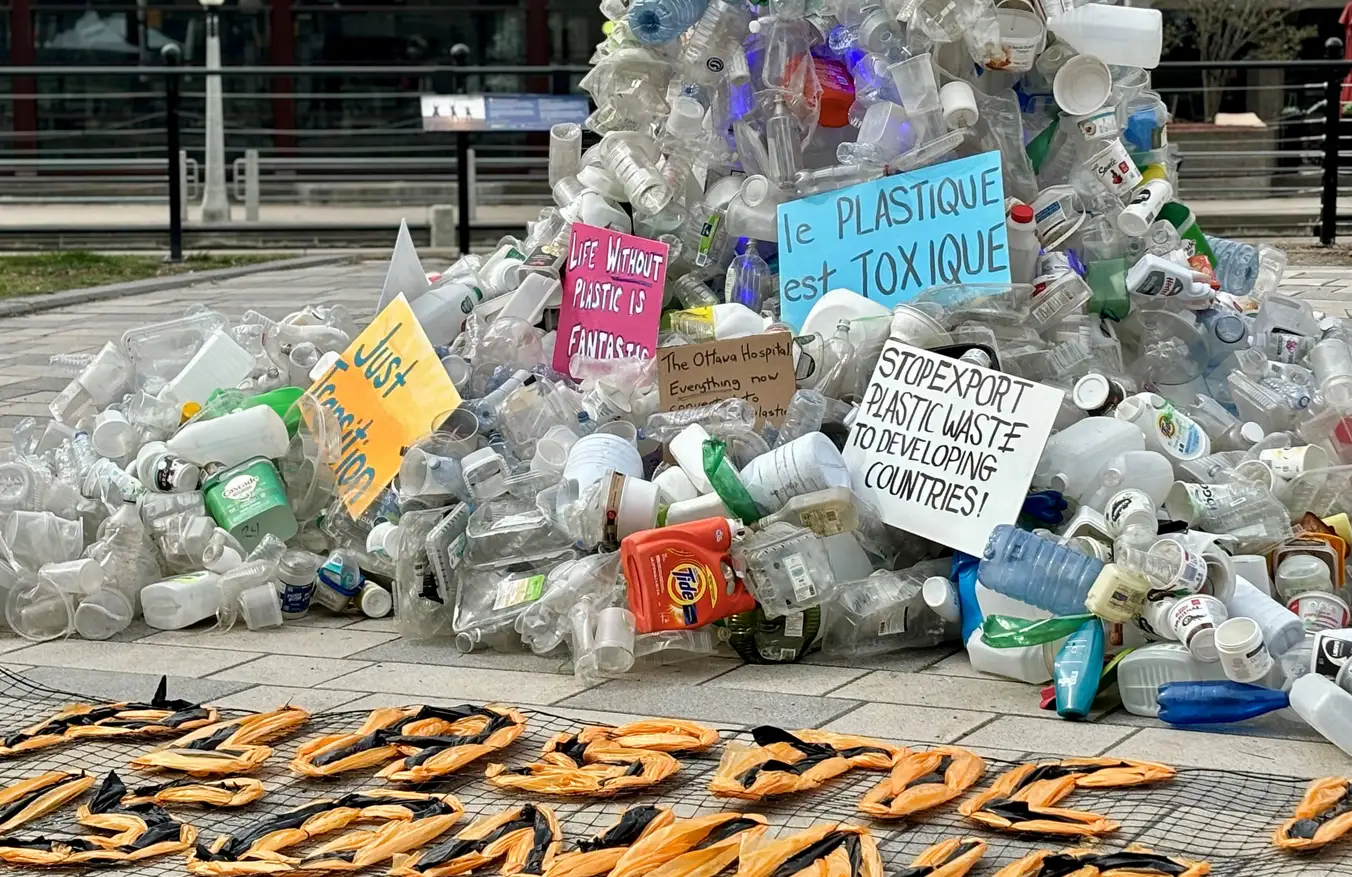The utopian promise of plastic was to be a wonder material of the modern age whose use was limited only by humanity’s imagination.
by Professor Sarah Dunlop, Minderoo Foundation
In the aftermath of the Second World War, plastic conquered the world as the cheap, durable material of choice. It was suddenly everywhere and in everything, from containers for kitchen storage and nylon shirts for the office to the seat trim of a station wagon.

But now our imaginations are gripped by the reality of the impact this material is having on our bodies and planet. Plastic pollution is now ubiquitous, releasing particles into the very air we breathe.
You might see some dancing in the sunlight with the dust motes, but most are too tiny to be visible to the naked eye. As they rain down upon us, instead of rolling off our skin like raindrops, these plastic particles can get into our bodies where the chemicals they’re made with can leach out.
But what affect is this having on human health? And how can we protect ourselves from this plastic deluge, and stop the storm breaking it?
At Minderoo Foundation, we’ve found it’s best to take an umbrella…
A team to take on plastic
In 2020 Minderoo established the multidisciplinary Plastics & Human Health (PHH) team to find the best available scientific studies on plastics and human health, untangle what the actual, measured effects are, and – most importantly – come up with solutions.
As scientists, we began with the understanding that plastic breaks up into tiny particles (micro- and nanoplastics) and leaches harmful chemicals, both of which get into our bodies through inhalation, ingestion, absorption through the skin, and even directly into our blood stream while we are growing in the womb.

The team then sought to gather insights into what effect this was having on human health by looking at epidemiological studies, involving living human beings and real-life exposure to plastic.
We swiftly found a distinct lack of this kind of epidemiological research on plastic particles, since the methods to accurately detect and measure them in the body are still being refined. We could only look to laboratory studies indicating that micro- and nanoplastics are likely to harm human health.
In contrast, we did uncover thousands of individual studies investigating exposure to plastic chemicals and the havoc this may be wreaking on human health. Despite more than 16,000 chemicals being used to make plastic, many of which are known to be hazardous, only a small proportion were the focus of these studies, but perhaps they were the “canaries in the coal mine” that would begin to tell us how plastic chemicals affect our health.
As we delved into the details, we soon realised that with the myriad populations, methodologies and statistical approaches used in these studies, and the disparate findings, even this abundance of research conducted to date would not reveal clear answers about how these chemicals affect our health.
Using an umbrella to review the evidence
This is why our PHH research team at Minderoo, in collaboration with JBI at The University of Adelaide, undertook an umbrella review to systematically examine vast amounts of research data from thousands of human health studies on the impact of plastic chemical exposure.
An umbrella review is a recognised, methodical form of research synthesis which involves combining meta-analyses from systematic reviews conducted on a very broad topic, to demonstrate the overall evidence on that topic to date.
It helps policy and decision makers see the wood for the trees and appreciate where strong and consistent evidence exists, and where there are doubts, inconsistencies and complete knowledge gaps.
Best of all, an umbrella review delivers a comprehensive overview of evidence without diluting the nuance in that evidence, and without ‘cherry picking’ evidence to fit a particular view or narrative.
The umbrella review undertaken by Minderoo and JBI synthesised data from 52 systematic reviews, involving more than 900 meta-analyses on around 1.5 million individuals, including pregnant women, babies, children and adults.
Each systematic review looked at a number of primary studies investigating the impact of one plastic chemical, or one group of plastic chemicals, on a particular domain of health. The meta-analysis is the method used to statistically combine the data to better understand that impact.
While it wasn’t feasible to look at every class of chemical used in plastics, our umbrella review focused on research into some of the commonly used groups of plastic chemicals that we know humans are exposed to.
We looked for meta-analyses on bisphenols, plasticisers, flame retardants, the “forever chemicals”, per- and polyfluoroalkyl substances (i.e. PFAS), and particles (micro- and nanoplastics), where these chemicals or particles were directly measured in human participants, with investigations into any health outcomes.
Knowledge is power
Our umbrella review found that there is consistent and irrefutable evidence that plastic chemicals in every group examined harm human health, across the entire human life cycle.

Umbrella Review
A world leading study that provides the most robust evidence yet that human health is seriously harmed by plastics, across the entire human life cycle.
Evidence of harm was found in relation to five groups of chemicals of concern: bisphenols - BPA specifically, phthalates (commonly used plasticisers), PCBs and PBDEs (flame retardants) and PFAS. Higher exposure to these chemicals increases the risk of developing a multitude of health harms, including:
- Decreased weight and genital malformation in newborn babies
- Neurodevelopment disorders in children
- Early puberty onset for girls
- Polycystic ovarian syndrome (PCOS) and endometriosis in women
- Miscarriages in women
- Reduced sperm quality and sperm concentration in men
- Obesity in children and adults
- Cancers in men and women
- Cardiovascular disease
- Insulin resistance in children and adults
- Type II diabetes in adults
At Minderoo, we are advocating for comprehensive global regulation of chemicals used in plastics, including the five groups of chemicals identified in the umbrella review, through the Global Plastics Treaty.
The findings from the umbrella review – including a peer-reviewed scientific paper and the report titled Umbrella Review: Impact of plastic-associated chemical exposure on human health – are accessible through Minderoo’s Global Plastics Treaty website.
The push for real change on global plastics
The umbrella review findings presented by Minderoo and JBI are now available to everyone. This comprehensive overview of the best and most compelling evidence for how chemicals in plastic are impacting our health will be valuable to scientists, health professionals and all sectors of society.
People everywhere can arm themselves with knowledge that can help them make better choices about the plastics they encounter in their daily lives. Governments worldwide now have the insights they need to push for change that will protect citizens, and the findings provide much-needed certainty for industry around groups of plastic chemicals that cannot be considered safe.
But don’t forget, the umbrella review was also created to identify gaps in our knowledge. It shows we need far more scientific data on the effect of plastics on human health, including for micro- and nanoplastics, for which no systematic review health data yet exists.
Combine that need for more health insights with the situation that in the majority of cases industry doesn’t disclose which plastic chemicals are in plastic materials and products, and we are still stuck in a storm.
But change is already happening – governments around the world have already taken individual measures to address this global crisis, reflecting a change in their citizens’ attitudes towards plastics. And negotiations for a Global Plastics Treaty are well underway.

A robust Global Plastics Treaty that comprehensively regulates toxic chemicals used in plastic will protect our health, the health and future of our children and provide government and industry with regulatory certainty.
It will include a financing mechanism to support a just transition that enables innovation in plastic alternatives, supporting countries to reduce plastic pollution, including remediation of legacy plastics, and supporting human health scientific research and monitoring.
With a foundation of focused scientific knowledge now available through our umbrella review, we are confident work to understand the impact of plastic – and make real change – is in everyone’s hands.